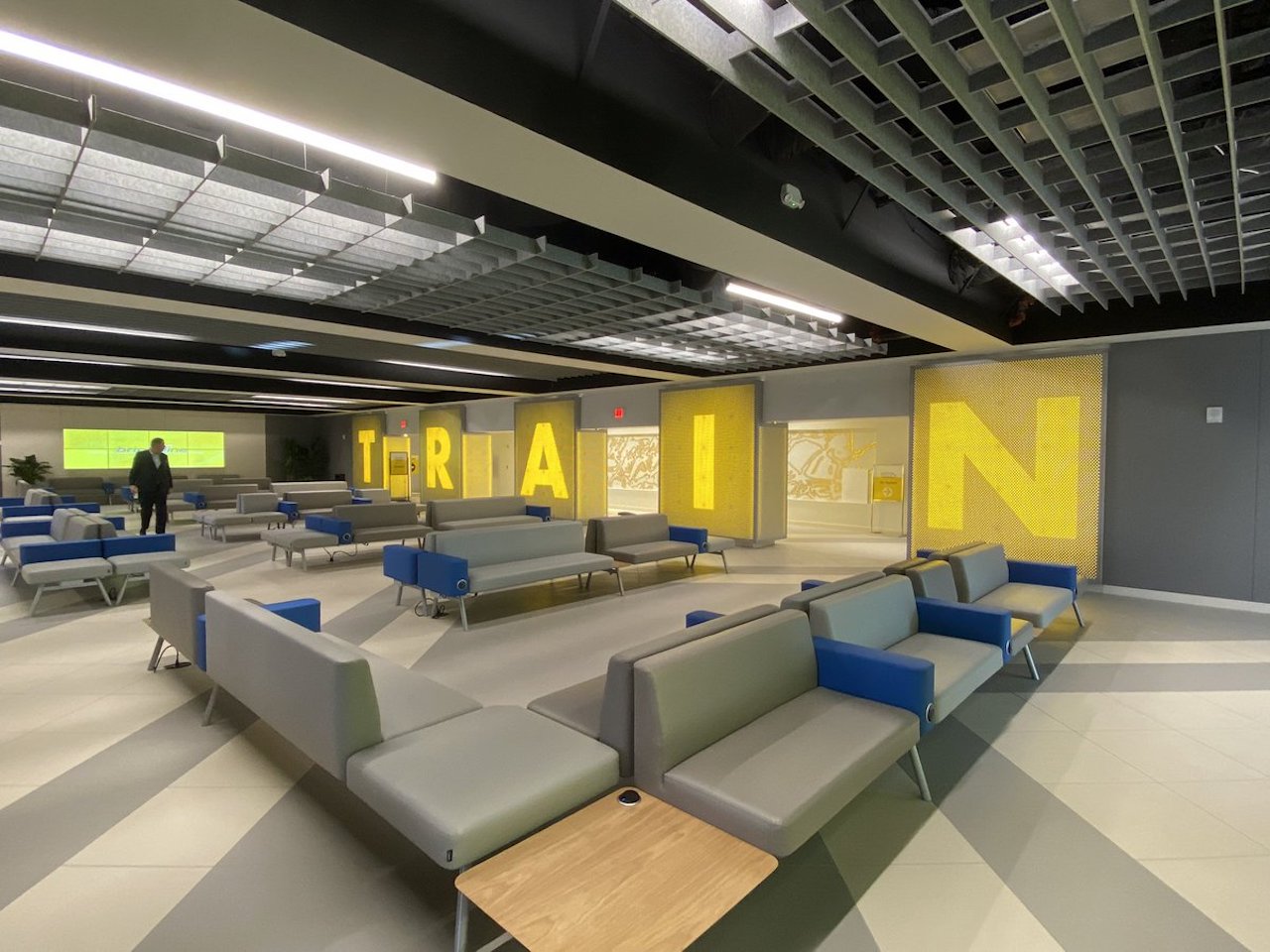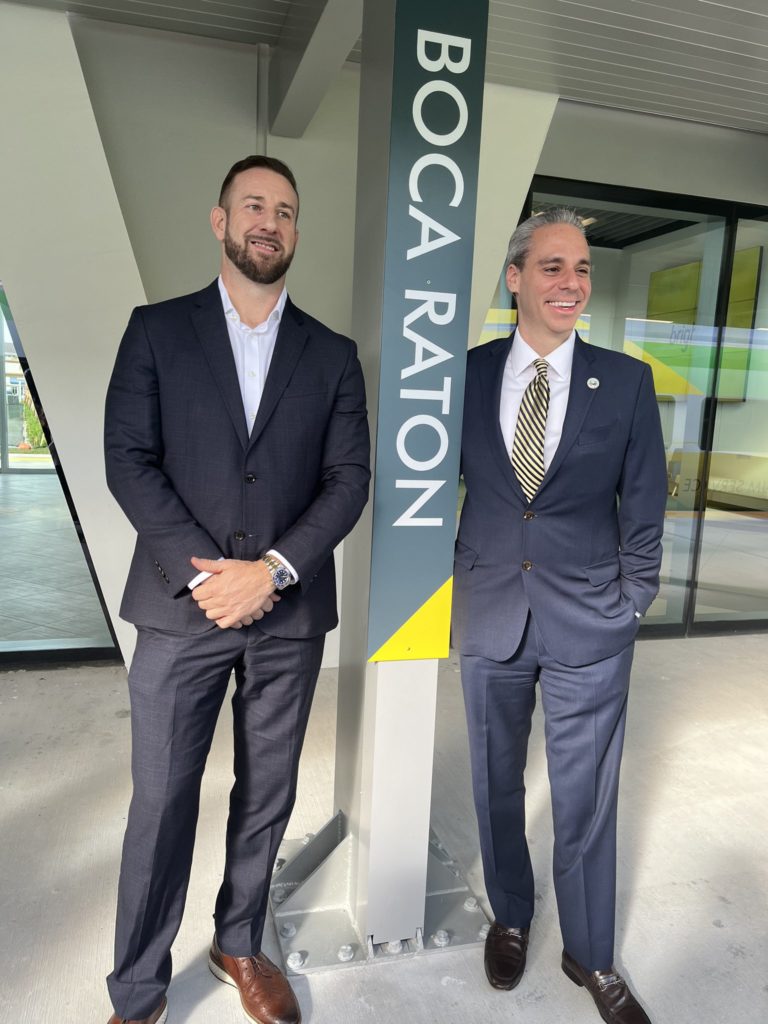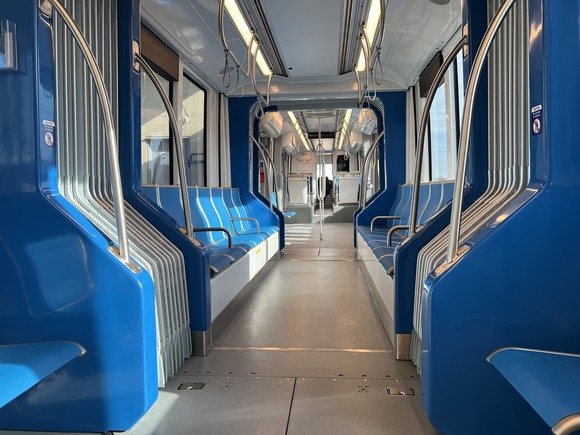
Transit Briefs: Brightline, MDOT MTA, Houston Metro
Written by Carolina Worrell, Senior Editor
SMART lounge inside the new Aventura Station . Courtesy of Brightline, via Twitter.
Brightline opens two new stations in South Florida. Also, the Maryland Department of Transportation Maryland Transit Administration (MDOT MTA) celebrates completion of new MARC Riverside Heavy Maintenance Facility; and the Metropolitan Transit Authority of Harris County (Metro) in Houston debuts new generation of more accessible railcars.
Brightline
Brightline on Dec. 20 celebrated the opening of its two new stations in South Florida – the Aventura station, located off Biscayne Boulevard across from the Aventura Mall and the Boca Raton station, located at 101 NW 4th Street, near Mizner Park. Currently, the rail network has stops in Miami, Fort Lauderdale and West Palm Beach.

“We’ve been talking about this for years about what a game changer Brightline would be for our community,” Boca Raton Mayor Scott Singer said. “We’re going to be reaping the benefit of this day for years. This is a historic moment for Boca Raton.”
As for whether added stops will slow service down, Brightline says it is “running trains that stop at Aventura and Boca Raton every two hours, while trains that go from Miami to Fort Lauderdale to West Palm Beach will run hourly,” according to a Local10.com report.
Service at the Boca Raton Station began Dec. 21. Brightline is finalizing construction inspections at Aventura Station that have prevented it from opening on Tuesday as initially scheduled, the rail service announced via a Twitter post.
Brightline has posted the following message on the homepage of its website: “Aventura Station schedule is being adjusted as we implement finishing touches. We are working around the clock to get these issues resolved as soon as possible. Please check back for updates.”
MDOT MTA
MDOT MTA on Dec. 16 celebrated completion of the $64.2 million MARC Riverside Heavy Maintenance Facility in Baltimore.
During a ribbon-cutting event of the project, which will “improve MARC Train maintenance and operational efficiency,” officials said the new 35,000-square-foot facility will “enhance locomotive and railcar maintenance capabilities and support major transit improvements along the Northeast Corridor (NEC).”
The ceremony was attended by MDOT Secretary James F. Ports, Jr., MDOT MTA Administrator Holly Arnold and Federal Transit Administration (FTA) Regional Administrator Terry Garcia Crews.
The MARC Riverside facility, which is set to be fully operational by mid-2023, includes four maintenance slots for locomotives undergoing heavy maintenance and repair, which will free up the existing shop building to streamline preventative maintenance and federally required inspections. Improved equipment and maintenance repair times provides operational flexibility–decreasing repair times, increasing fleet availability and improving on-time performance, MDOT MTA said.
According to MDOT MTA, maintenance staff will now begin a testing and commission period for the facility’s wheel truing machine and drop table. That process must be completed for each type of MARC vehicle and will take several months. The building is designed to accommodate future rolling stock, allowing MTA to procure dual-mode or electric locomotives in the future to operate on the Penn Line.
The new maintenance facility, MDOT MTA says, also supports future projects for MARC Train, including the proposed Penn-Camden Connector, a commuter rail connection between the two rail lines. It is also an enabling project for the future Frederick Douglass Tunnel/B&P Tunnel Replacement project.
“Maintaining a balanced transportation system in a state-of-good-repair is critical to customers and communities we serve across Maryland,” said Secretary Ports. “The new MARC Riverside facility exemplifies our commitment to improve our transit network, maintain convenient and reliable service, and provide customers with options that can help alleviate traffic congestion and reduce vehicle emissions.”
“I’m excited for the impact this facility will have on our MARC Train service,” added Administrator Arnold. “With its specialized machinery, this building will enable MARC to improve service and operate more efficiently for decades to come.”
Houston Metro
Metro announced Dec. 15 that it has welcomed the first of 14 new fourth generation (H4) light rail vehicles (LRV) to its current fleet, which will serve the MetroRail Red Line.

According to Metro, the H4s, which were supplied by Siemens, offer an open seating plan and nearly four feet of aisle space to allow easier flow through the car and better accommodate wheelchairs, strollers and passengers with bicycles.
This is the Authority’s fourth procurement of LRVs since Metro opened the Red Line for service in 2004 with 18 rail cars. In 2019, METRO awarded a contract to Siemens to supply 14 S70 LRVs, taking the number of S70s in service in Houston to 51. Siemens supplied an initial 18 Series H1 vehicles in 2003. This was followed by a further order of 19 Series H2 LRVs in 2012.
MetroRail also operates 30 Series H3 vehicles supplied by CAF USA in 2015.
The vehicles go through an extensive qualification and safety process with 1,000 miles of running time before going into service.
Houston was the first city to opt for the S70, which entered service with the opening of the first phase of the MetroRail network in 2004. Siemens has since supplied more than 600 S70s to 11 U.S. cities.



